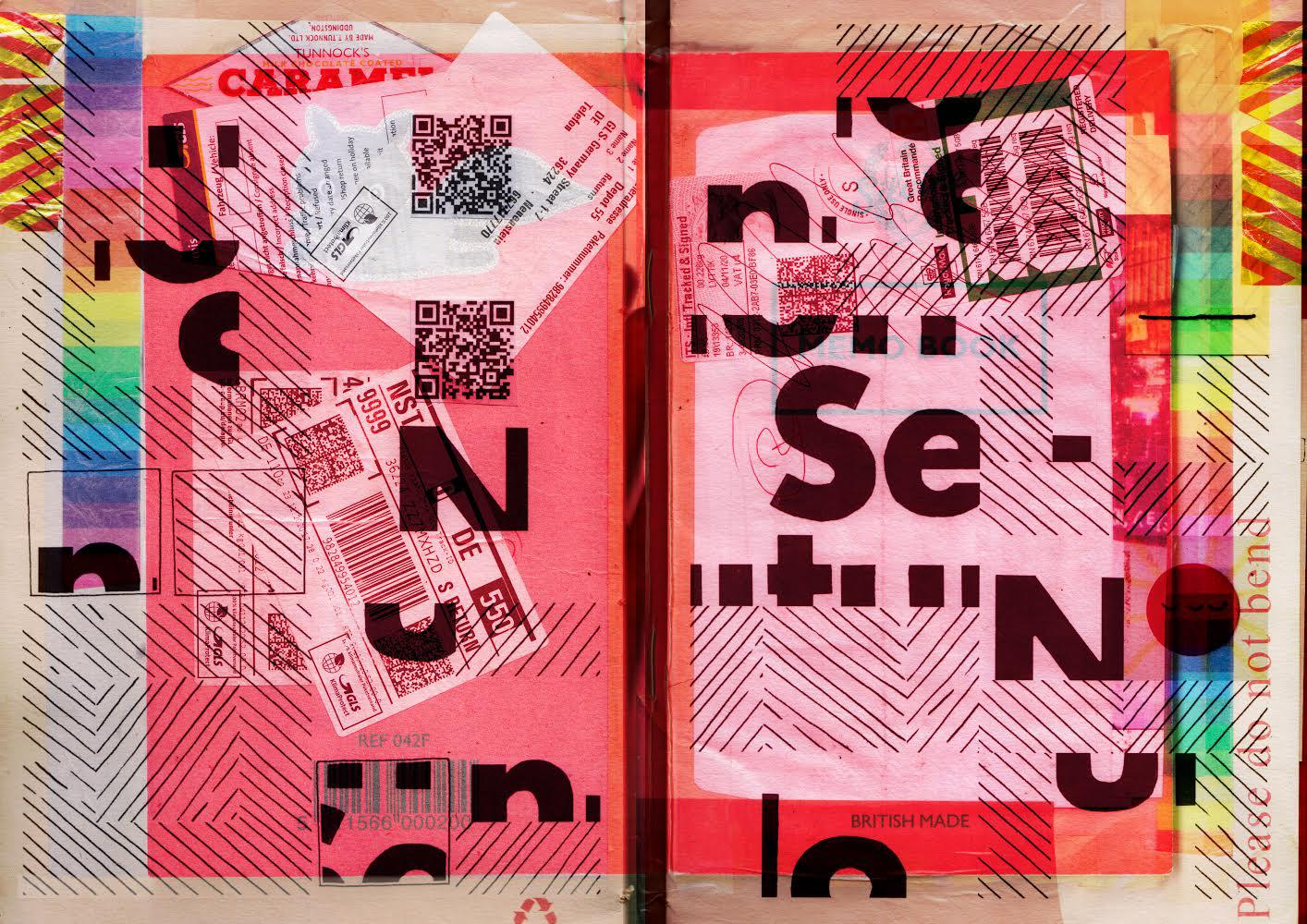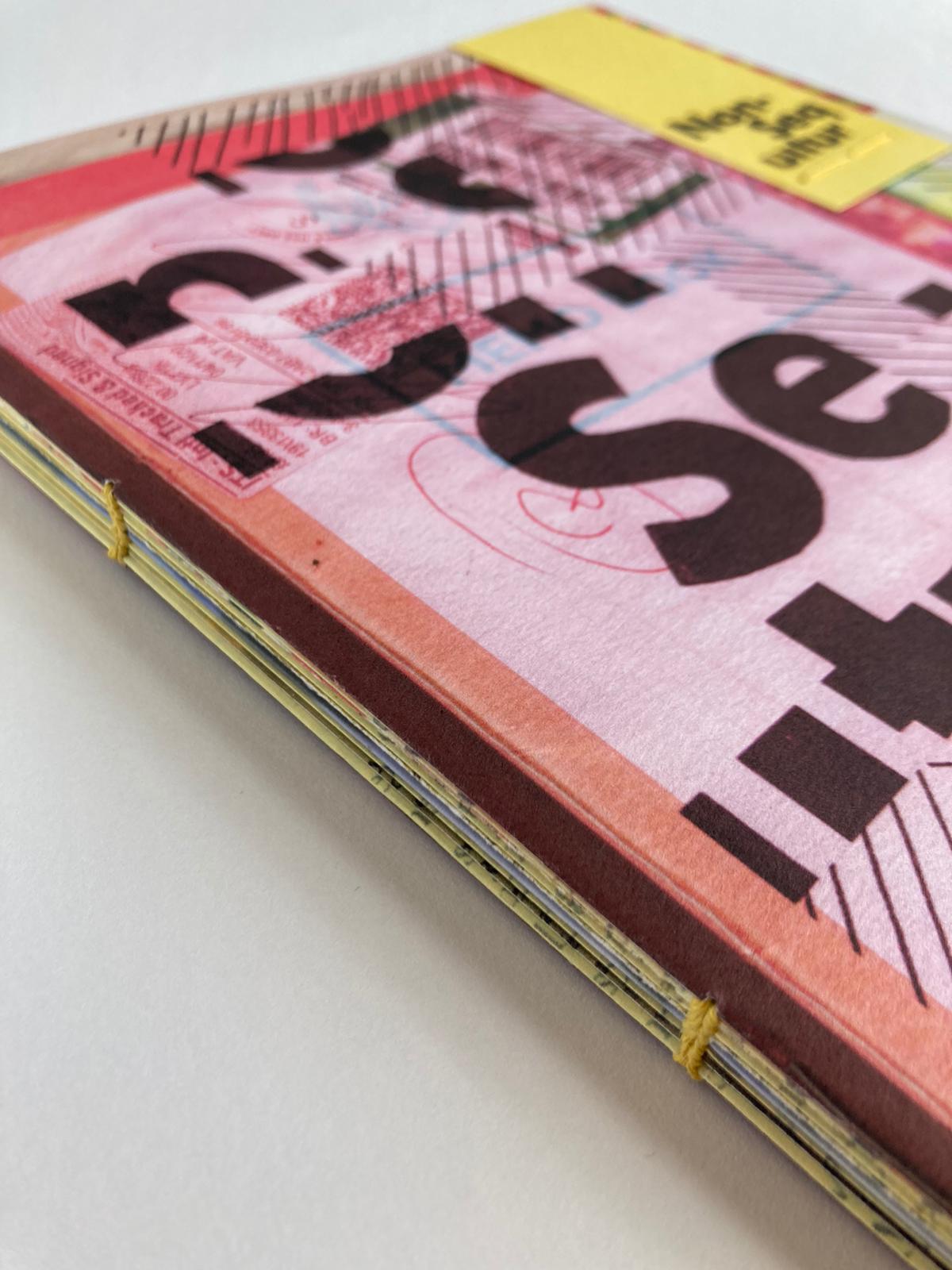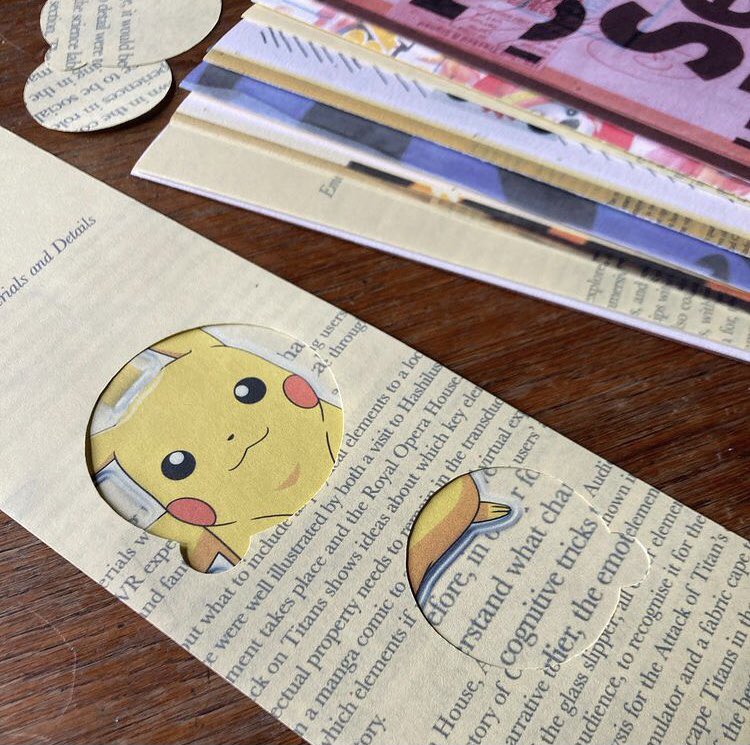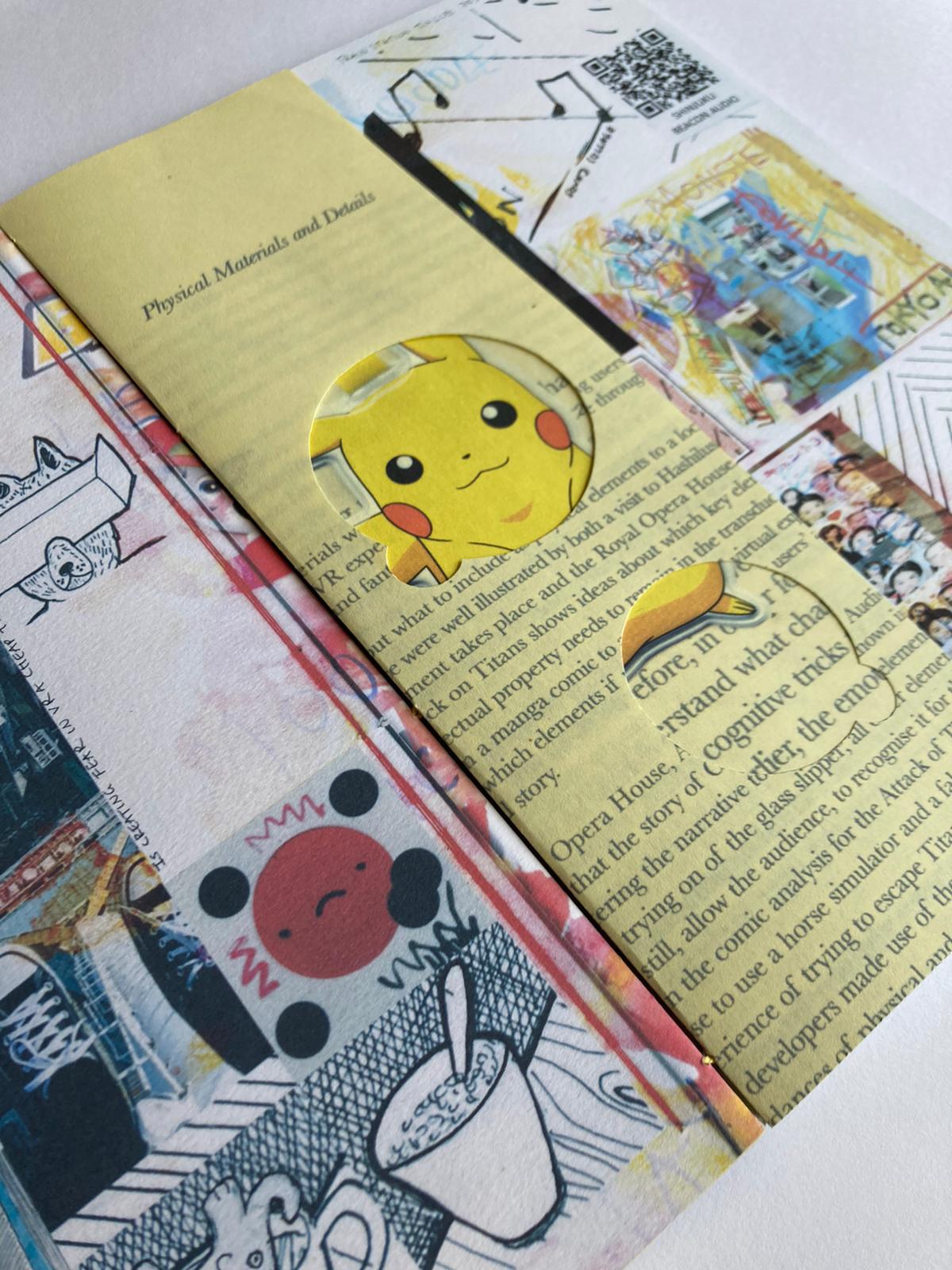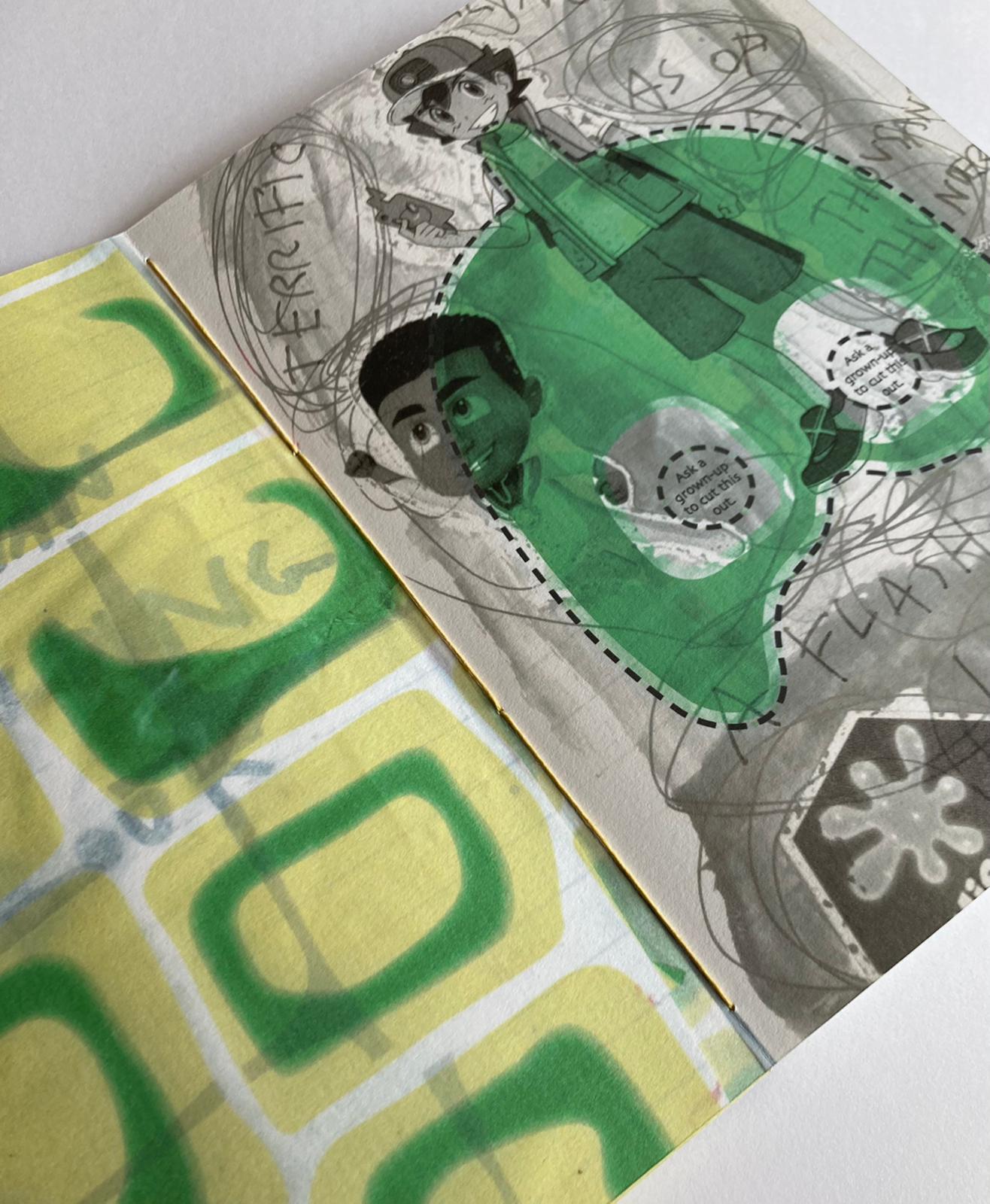Research: Co-production Non-Sequitur Research Zine
2021
Dylan Yamada-Rice, Richard Nash and Angus Main, Royal College of Art; Eleanor Dare, University of Cambridge and John Potter, University College London
This knowlege exchange project involved members of the UK-Japan Location-Based VR for Children Network working with artists’ book and zine practitioner Richard Nash to explore ways in which his expertise could be used for secondary analysis of the project data to generate new knowledge. The final creation of the zine was framed as a structured co-production methodology that was undertaken in three stages:
Stage 1: A collaborative workshop which produced a series of collage narratives
Here we used templates in the form of comic panels which the network team filled with memories and images connected to the orginal data analysis. In the two images below, I focused on filling the panels with drawn recollections connected to the theme of “more than human worlds” and the “unreal” which was an emerging theme from the original project data analysis I undertook using thematic analysis.

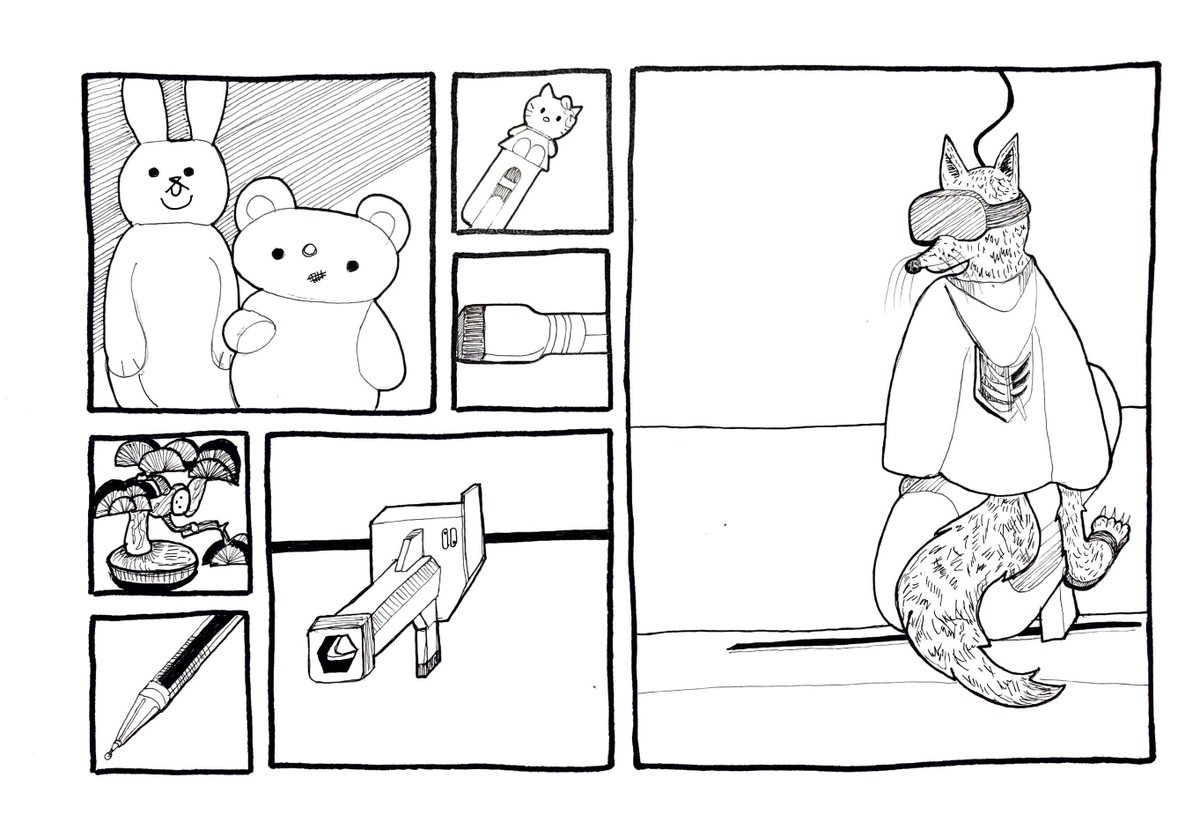
Images: The Unreal, Ink on paper
Stage 2: Collaborating with a non-human entity in the form of a digital coded tool to reconfigure the workshop responses and mediate the hierarchy of roles
During this second stage, Nash used a piece of code created in Processing 3 as a means of randomising all network members responses to the first workshop. This produced pages containing combinations of images mashed together. The idea was that in seeing these new automated combinations of images we might make connections between them and discover findings we had not previously unearther. The pages produced were bound by Nash into the first iteration of the zine for use in stage 3:
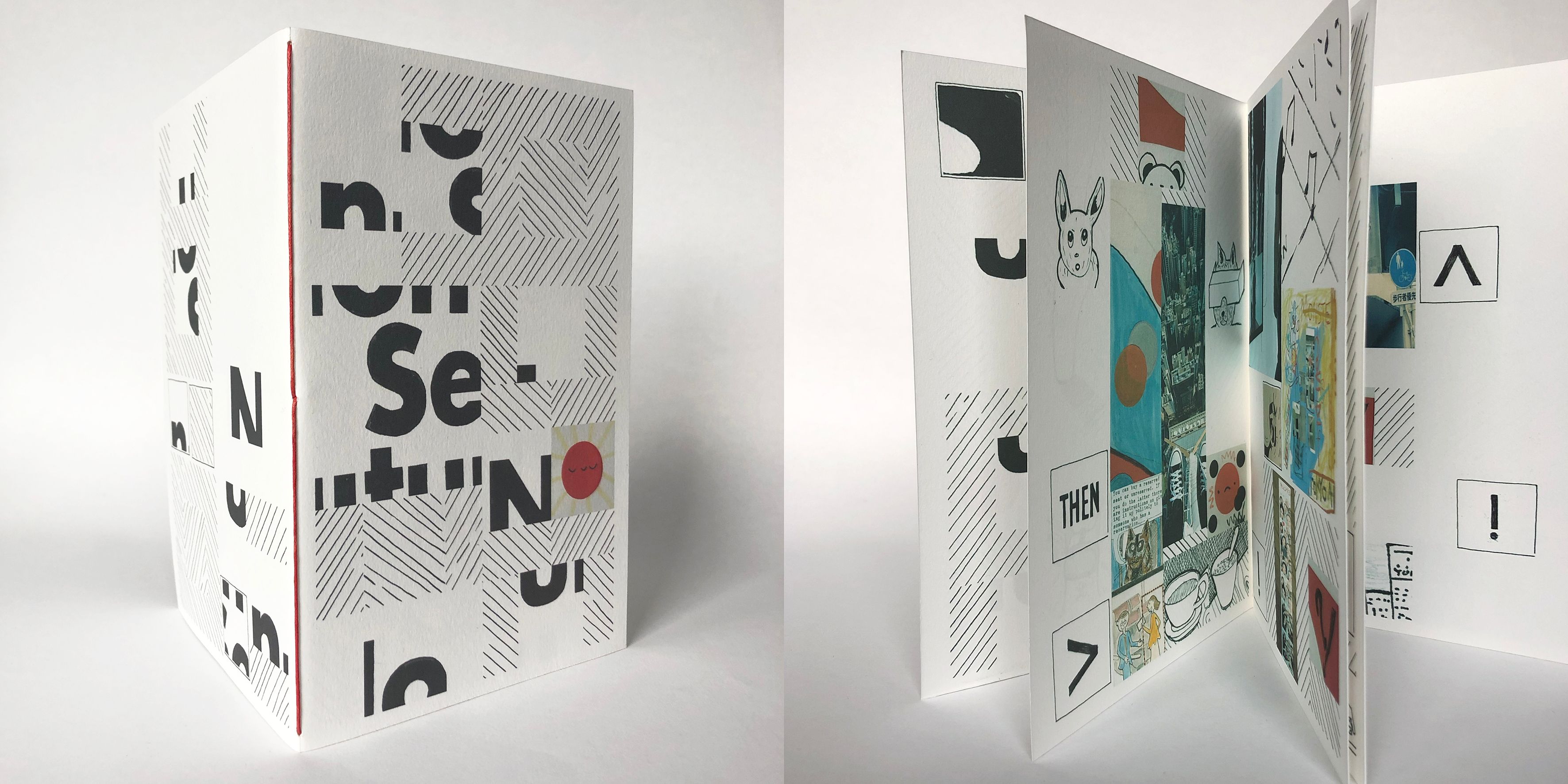 Images by Richard Nash
Images by Richard NashStage 3: Co-production of a zine as a collaborative reflection method
During the final stage, the zine was sent as a round robin via the postal service to enable each memeber to make visible the connections they made between the randomised images. In doing so the process enabled a continuing dialogue and exchange of ideas and knowledge held by the interdisciplinary network members. As a group we drew on our own art practices. For example, while I continued to draw, John Potter chose used his skills as a musician to augument sound and video into the zine. You can read more about John’s thoughts on this process here.
The analysis of the data collected via the zine highlighted five themes that could be used by other
researchers on a wide range of projects. These were: (1) knowing through making, (2) the importance of process, (3) beyond linear representations, (4) agency of physical materials and (5) agency of digital code. You can read more in about the project and the findings in our publication below.
Related Publications
Nash, R., Yamada-Rice, D., Dare, E., Love, S., Main, A., Potter, D., Rodrigues, D. (2021) Using a collaborative zine to co-produce knowledge about location-based virtual reality experiences. Qualitative Research Journal, Vol.21 (2).
